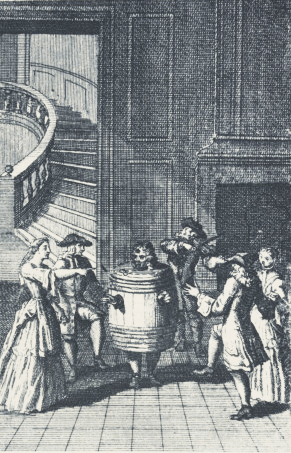Restoration comedy facts for kids
Restoration comedy is a type of English play that was written and performed during a special time in history called the Restoration period. This period lasted from 1660 to 1710. You might also hear it called "comedy of manners."
Before 1660, public plays were banned for 18 years by a strict government called the Puritan regime. When the theatres finally reopened in 1660, it was like a new beginning for English drama. People were very excited!
Audiences for these plays were quite mixed. They included rich nobles, their servants, and many middle-class people. Everyone loved the comedies because they were about current events, had exciting and busy stories, and featured the very first professional actresses. This was also when the first celebrity actors became famous. Aphra Behn became the first professional female playwright during this time.
Contents
Theatre Companies
Original Companies: 1660–1682
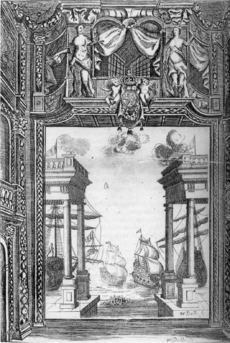
King Charles II loved plays and was very supportive of them. Soon after he became king again in 1660, he gave special permission, called "Royal patents," to two main theatre groups. These were the King's Company and the Duke's Company. They were led by two experienced playwrights, Thomas Killigrew and William Davenant.
These companies quickly tried to get the rights to perform older plays from earlier times, as they needed plays to put on right away. Their next big goal was to build amazing new theatres. The King's Company built one in Drury Lane, and the Duke's Company built one in Dorset Gardens.
Both theatres were designed by the famous architect Christopher Wren. They were built to be very grand, with special features for music and dancing. They also had moving scenery and cool machines that could make thunder, lightning, and even waves!
The plays from this early period often showed the lives of the upper class. They focused on how people behaved in society, which is why they are called "comedies of manners."
The audiences were not huge, and it was hard for two companies to survive. This meant playwrights had to be very good at giving people what they wanted. Play styles changed very quickly, sometimes even week by week! This fast pace helped new types of plays, like Restoration comedy, become popular.
United Company: 1682–1695
In 1682, the two theatre companies joined together to form the United Company. This happened because the King's Company was struggling. After this merger, fewer new plays were written. This was partly because there was no longer competition, and also due to political changes happening in England.
Actors also saw their influence and pay go down. In the late 1680s, some investors took over the United Company. A lawyer named Christopher Rich became the manager. He tried to save money by cutting actors' salaries and taking away their special benefits. This made the famous actors, who were very important to the audience, quite angry.
War of the Theatres: 1695–1700
A young actor named Colley Cibber wrote that the company owners "had made a monopoly of the stage." This meant they thought they could treat their actors however they wanted. But they forgot that the public loved and supported the actors.
So, famous performers like Thomas Betterton, the serious actress Elizabeth Barry, and the popular young comedian Anne Bracegirdle decided to leave. They knew the audience was on their side.
The actors got special permission from the King to perform. This allowed them to start their own company, separate from Christopher Rich. They set up clear rules to make sure no one person had too much power. They also made sure actors had shares in the company and benefits for sickness or retirement.
This new company was very lucky! They opened in 1695 with a play called Love For Love by William Congreve. It was a huge hit and made a lot of money.
Now, London had two competing theatre companies again. This competition made plays exciting for a short time. But it also led to companies trying to attract audiences with all sorts of entertainment. Rich's company started offering things like high-kickers, jugglers, rope dancers, and even performing animals. The actors' company, while trying to seem more proper, also used tricks like having young boys recite speeches or ladies on horseback.
Actors
First Actresses
Restoration comedy was greatly changed by the arrival of the first professional actresses. Before the theatres closed, all female roles were played by young boys. So, when real women appeared on stage in the 1660s and 1670s, audiences were very curious and excited.
Samuel Pepys, who kept a famous diary, often wrote about going to plays just to see certain actresses. He loved watching them perform.
Plays started to have more scenes with women that were quite bold and playful. Of course, actresses, like male actors, had to be good at all kinds of plays.
One special type of role that became popular was the "breeches role." This is when an actress would wear male clothes, like tight-fitting knee-length pants (called breeches). For example, a clever female character might dress as a boy to hide or to go on adventures that girls weren't allowed to do. About a quarter of all plays between 1660 and 1700 had these roles. When women played these parts, they could act with the freedom that society usually only allowed to men.
Some of the successful actresses of this time included Nell Gwyn, who was also King Charles II's mistress. There was also Elizabeth Barry, known for making audiences cry with her emotional performances. In the 1690s, Anne Bracegirdle was a popular comedian, and Susanna Verbruggen had many roles written just for her.
First Celebrity Actors
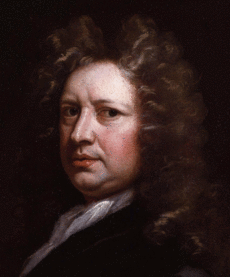
For the first time in London, actors and actresses became public celebrities. Records from the time show that audiences went to plays because of specific actors, not just the plays themselves. In fact, authors were the least important reason; plays weren't advertised by their authors until 1699.
Even though theatres were built for large crowds (the second Drury Lane theatre in 1674 could hold 2000 people), they were designed so that an actor's personality could reach everyone from the front of the stage.
When there were two competing companies (from 1660 to 1682), star actors could get great deals. They received shares in the company and special "benefit nights" where they kept the profits, on top of their salaries. This changed when the companies merged in 1682. But the way actors rebelled and started their own company in 1695 shows how much power they had gained since 1660.
The biggest stars among Restoration actors were Elizabeth Barry and Thomas Betterton. Both were key leaders in the actors' rebellion in 1695 and became original owners in the new actors' company.
Betterton played every major male role from 1660 into the 1700s. After seeing him in Hamlet in 1661, Samuel Pepys wrote that the young Betterton "did the prince's part beyond imagination." His powerful performances attracted playgoers just as much as the newness of seeing women on stage. He quickly became the main actor in the Duke's Company. He played Dorimant, a famous charming character, in George Etherege's Man of Mode (1676). Betterton remained the top actor throughout the 1680s and also managed the United Company's stage. He eventually led the actors' walkout in 1695 and became the acting manager of the new company.
Comedies
Restoration comedy is known for its variety and how quickly styles changed. While it might seem like all plays from this period are similar, experts now understand how fast English drama changed over these 40 years. This was due to social and political reasons, as well as the competition between theatre companies.
Restoration comedy had two peak periods. The first "golden age" was in the mid-1670s, with many plays about the lives of the rich. Then came about 20 quieter years, though Aphra Behn wrote some important plays in the 1680s. In the mid-1690s, there was a second, shorter burst of Restoration comedy, which aimed to reach a wider audience.
The comedies from the 1670s and 1690s are very different. To show this, we can look at The Country Wife (1675) and The Provoked Wife (1697). These plays show how tastes changed, much like how Hollywood movies from the 1950s differ from those of the 1970s. But remember, these are just examples, as comedy styles kept changing even within these short periods.
Early Comedies: 1660–1680
The plays of the 1660s and 1670s were full of energy because of the competition between the two theatre companies and King Charles II's personal interest. Playwrights worked hard to create new plays. They often took ideas from French and Spanish plays, older English plays, and even ancient Greek and Roman comedies. They mixed these ideas in exciting ways.
Audiences liked plays that had a lot of variety, even within a single play. They wanted busy stories with many different plots and a fast pace. Sometimes, even a bit of serious, heroic drama would be added to a comedy, like in George Etherege's Love in a Tub (1664). This play had a serious plot about love and friendship, a clever comedy plot, and a funny, silly plot. (See illustration at the top of the page.)
These "hard" comedies by writers like John Dryden, William Wycherley, and George Etherege showed the atmosphere of the King's Court. They openly celebrated a bold, adventurous lifestyle of clever plans and winning over others. For example, the real-life courtier and poet John Wilmot, 2nd Earl of Rochester is shown in Etherege's The Man of Mode (1676) as a wild, witty, and smart noble. Wycherley's The Plain Dealer (1676) was praised for its strong humor.

Comedy Changes: 1678–1690
When the two theatre companies joined in 1682, there was only one theatre company in London. This caused the number and types of new plays to drop a lot. Plays started to focus more on serious political topics. The few comedies that were written often had a political message. Aphra Behn was a very important female writer during this time, and her work is still studied today.
Comedy Returns: 1690–1700
In the 1690s, there was a second wave of Restoration comedy. These "softer" comedies by writers like William Congreve and John Vanbrugh showed how society was changing. Playwrights in the 1690s wanted to appeal to a wider audience, including more middle-class people and women.
They changed the "battle of the sexes" from clever tricks to discussions about marriage. The comedies focused less on young lovers trying to outsmart older people and more on what happens after the wedding. For example, Thomas Southerne's The Wives' Excuse (1691) is a serious play. It shows a woman unhappily married to a foolish man whose silly actions hurt her reputation. She is pursued by another man, but none of her choices seem good. The humor in this play comes from the smaller side stories, not the main plot.
In Congreve's Love for Love (1695) and The Way of the World (1700), the clever arguments between lovers, common in the 1670s, are less important. Instead, couples have witty discussions before marriage, like the famous "Proviso" scene in The Way of the World. Vanbrugh's The Provoked Wife (1697) is similar to Southerne's Wives' Excuse, but it's lighter and has characters that feel more real.
Example: John Vanbrugh, The Provoked Wife (1697)
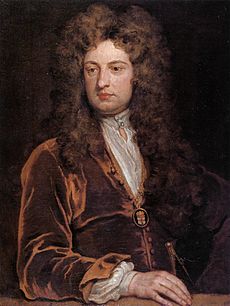
The Provoked Wife is a play that looks at the challenges faced by married women in the 1690s. It explores ideas of separation and what happens when marriages go wrong.
In the play, Sir John Brute is tired of being married. He is always rude to his wife. Lady Brute is tempted to start a relationship with the clever and loyal Constant. At this time, getting a divorce was very difficult. However, new ways for couples to legally separate were becoming available. This meant the wife could get her own money to live on, but they couldn't remarry. Lady Brute talks with her niece Bellinda and thinks, "These are good times. A woman may have a gallant and a separate maintenance too."
Meanwhile, Bellinda is being courted by Constant's friend, Heartfree. Heartfree is surprised to find himself falling in love with her. The bad example of the Brutes makes Heartfree nervous about getting married.
The Provoked Wife is a play with a lot of talking. It focuses more on discussions between friends, both women (Lady Brute and Bellinda) and men (Constant and Heartfree). These conversations are full of jokes, but they also show sadness and frustration.
After some mix-ups with a fake letter, the play ends with Heartfree and Bellinda getting married. The Brutes' marriage remains stuck. Constant continues to try to win over Lady Brute, and she keeps putting him off.
End of Comedy
By the end of the 1600s, people's opinions were changing. They wanted plays to be more respectable and serious. This happened faster than playwrights could change their styles. Many things caused this shift, including changes in the population, the Glorious Revolution of 1688, and the fact that King William and Queen Mary didn't like the theatre much. Also, groups like the Society for the Reformation of Manners (started in 1692) began suing playwrights.
When Jeremy Collier criticized Congreve and Vanbrugh in his book Short View of the Immorality and Profaneness of the English Stage in 1698, he was simply pointing out a change in what audiences wanted. At the big premiere of The Way of the World in 1700, Congreve's first comedy in five years, the audience was only mildly interested in the subtle play. Soon, comedies would be replaced by plays that focused on clear feelings and good morals.
After Restoration Comedy
Stage History
During the 1700s and 1800s, the directness of Restoration comedy meant that theatre producers often changed the plays a lot instead of performing them as they were written.
Today, Restoration comedy is enjoyed on stage again. The most famous plays – Wycherley's The Country Wife and The Plain-Dealer, Etherege's The Man of Mode, and Congreve's Love For Love and The Way of the World – are now performed alongside others. These include Vanbrugh's The Relapse and The Provoked Wife, and even more serious comedies like Thomas Southerne's The Wives Excuse. Aphra Behn's plays, once thought too difficult to stage, are now popular, with The Rover being a favorite.
List of Restoration Comedies
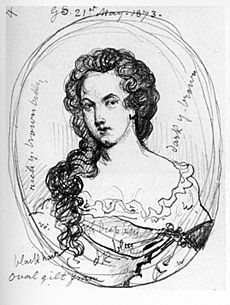
- George Etherege – The Comical Revenge (1664), She Would If She Could (1668), The Man of Mode (1676)
- John Dryden – An Evening's Love (1668), Marriage a la Mode (1672)
- Charles Sedley – The Mulberry-Garden (1668), Bellamira: or, The Mistress (1687)
- George Villiers, 2nd Duke of Buckingham – The Rehearsal (1671)
- William Wycherley – Love in a Wood (1671), The Country Wife (1675), The Plain Dealer (1676)
- Thomas Shadwell – Epsom Wells (1672), The Virtuoso (1676), A True Widow (1678), The Woman Captain (1679), The Squire of Alsatia (1688), Bury Fair (1689), The Volunteers (1692)
- Edward Ravenscroft – The Careless Lovers (1673), Dame Dobson (1683), The Canterbury Guests (1694)
- John Crowne – The Country Wit (1676), City Politiques (1683), Sir Courtly Nice (1685), The English Friar (1690), The Married Beau (1694)
- Thomas Rawlins – Tom Essence (1676), Tunbridge Wells (1678)
- Aphra Behn – The Counterfeit Bridegroom (1677), The Rover (1677), The Roundheads (1681), The Revenge (1680), The City Heiress (1682), The Lucky Chance (1686)
- Thomas D'Urfey – A Fond Husband (1677), Squire Oldsapp (1678), The Virtuous Wife (1679), Sir Barnaby Whigg (1681), The Royalist (1682) A Commonwealth of Women (1685), A Fool's Preferment (1688), Love for Money (1691), The Marriage-Hater Matched (1692), The Campaigners (1698)
- Thomas Otway – Friendship in Fashion (1678)
- Thomas Southerne – Sir Anthony Love (1690), The Wives Excuse (1691), The Maid's Last Prayer (1693)
- William Congreve – The Old Bachelor (1693), Love For Love (1695), The Way of the World (1700)
- John Vanbrugh – The Relapse (1696), The Provoked Wife (1697)
- George Farquhar – Love and a Bottle (1698), The Constant Couple (1699), Sir Harry Wildair (1701), The Recruiting Officer (1706), The Beaux' Stratagem (1707)
- Susanna Centlivre – The Perjured Husband (1700), The Basset-Table, (1705), The Busie Body (1709)
Film Adaptations
- The Country Wife, starring Helen Mirren (1977)
See Also
- Essay of Dramatick Poesie
- John Rich (producer)
- Restoration style


